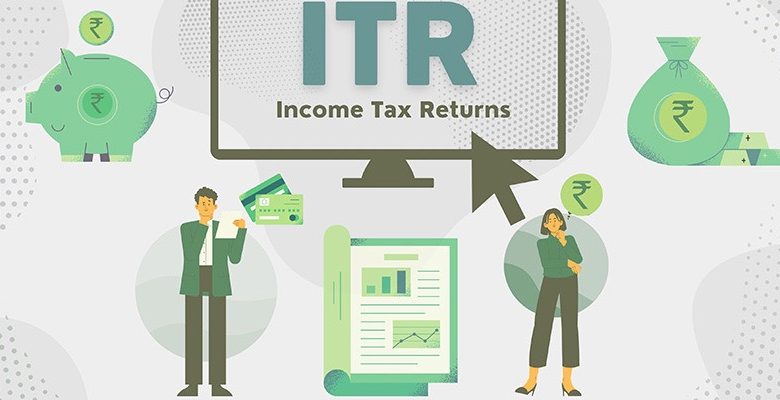Purpose and Filing Guidelines of ITR U Form for Taxpayers

The process of filing income tax returns is an essential annual activity for taxpayers to declare their income, claim deductions, and ensure compliance with tax laws. However, there are instances where taxpayers may have missed reporting certain incomes, made errors in their original filings, or neglected to file altogether. To address such cases, the Income Tax Department introduced the ITR U Form, a provision that allows taxpayers to file updated income tax returns for past assessment years.
The ITR U Form has been especially beneficial in aligning taxpayers with compliance while avoiding stringent litigation or penalties due to inadvertent mistakes in their earlier filings. In this article, we’ll discuss the purpose of the ITR U Form, its filing guidelines, and its relevance, particularly in relation to other income tax return forms such as ITR 6.
Purpose of the ITR U Form
The ITR U Form, where “U” stands for “Updated Return,” was introduced under Section 139(8A) of the Income Tax Act, 1961, aiming to promote voluntary tax compliance among taxpayers. Its primary purpose is to give taxpayers an opportunity to rectify errors, omissions, or provide unreported income related to a prior financial year without facing harsh penal consequences.
Key Scenarios That Require Filing of ITR U:
- Missed Income Disclosure: Taxpayers might inadvertently forget to report a source of income (e.g., rental income or capital gains). Using the ITR U Form helps to rectify this omission.
- Errors in Deduction Claims: Incorrect deductions, inaccurately claimed exemptions, or incorrect tax computation can be corrected by filing the updated return.
- Correction of Non-Filing: If a taxpayer completely missed filing an original or revised return for a financial year, the ITR U Form allows them to file even after the regular timeline has elapsed.
By introducing this form, the Income Tax Department encourages taxpayers to voluntarily align their filings with true and accurate details, thereby reducing the risk of non-compliance, hefty penalties, or prosecution.
Eligibility for Filing ITR U Form
Not everyone is eligible for filing the ITR U Form. It is important for taxpayers to understand the conditions under which updated returns can be filed:
- Eligible Assessees: Any taxpayer who has filed their original return or missed filing entirely can use the ITR U Form to declare updated information. However, such updates are restricted to legitimate corrections or omissions.
- Limitations: Updated returns cannot be filed if: – An ongoing investigation or assessment is already being conducted for that financial year.
– The taxpayer has been served a notice related to income concealment.
– The updated return involves reduction of tax liability or a claim for a refund.
Filing Timeline for ITR U
A taxpayer can file an updated return up to 24 months from the end of the relevant assessment year. For instance, if the financial year is 2021–22, its assessment year is 2022–23, meaning the taxpayer can file an updated return until the end of the 2024–25 assessment year.
A Step-by-Step Guide to Filing ITR U Form
- Accessing the Form
ITR U Form can be accessed online through the Income Tax Department’s e-filing portal [www.incometax.gov.in](https://www.incometax.gov.in). Alternatively, taxpayers opting for offline methods can download and fill the form manually.
- Filling Key Details
Taxpayers are required to provide the following information:
– Original and Updated Return Details: If the original return was filed, the acknowledgment number and date must be entered in ITR U.
– Reason for Filing Updated Return: Specify whether the filing relates to omission, incorrect returns, missed deadlines, etc.
– Tax Computation: Calculate taxes owed in light of the updated income details, including any additional interest or penalties.
- Payment of Additional Tax
Filing an updated return may require the taxpayer to pay additional tax liability. This includes:
– Regular tax computation based on updated data.
– 25% to 50% of additional tax payable, depending on whether the filing occurs in the first or second year post-assessment.
- Submission
Once all fields are completed and additional taxes are paid (if applicable), taxpayers can submit the form electronically or via the physical route. Documentation, proof of income, and tax details may need to be attached.
ITR U Form vs ITR 6
Understanding the distinction between ITR U Form and ITR 6 can be helpful for taxpayers navigating their filing obligations:
– ITR U Form: This form is exclusively designed for filing updated returns under Section 139(8A). It is applicable to all individuals, businesses, and corporate taxpayers seeking to amend a return for prior periods.
– ITR 6 Form: Used by companies (other than those claiming exemption under Section 11, such as charitable organizations) to file their income tax return for the current assessment year. It is mandatory for companies to file ITR 6 electronically along with digital signatures.
While companies can file updated returns using ITR U Form if an error is identified in their previous submissions, ITR 6 is strictly for regular corporate filings within the prescribed deadlines.
Benefits of Using ITR U Form
- Avoid Penalties: Filing updated returns voluntarily minimizes exposure to legal action and penalties.
- Compliance: Encourages taxpayers to remain in good standing with the Income Tax Department’s policies.
- Convenient Rectification: Simplifies the process of correcting past errors, encouraging transparency in financial dealings.
Conclusion
The ITR U Form is a commendable initiative by the Income Tax Department, offering taxpayers a structured pathway to correct omissions and align their filings accurately. Whether it’s for filing updated individual returns or resolving issues stemming from corporate taxes filed under ITR 6, the updated return mechanism reduces the burden of past errors while promoting long-term compliance. Taxpayers should utilize this provision responsibly, ensuring full disclosure and proper calculation of dues, while adhering to timelines and guidelines provided by the department.
By fostering transparency and voluntary compliance, the ITR U Form underscores the government’s commitment to simplifying tax obligations and supporting better governance for taxpayers.



